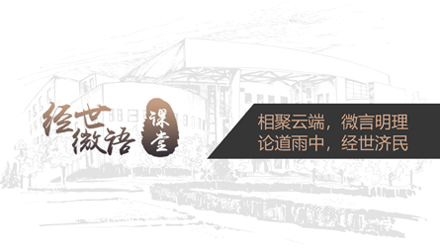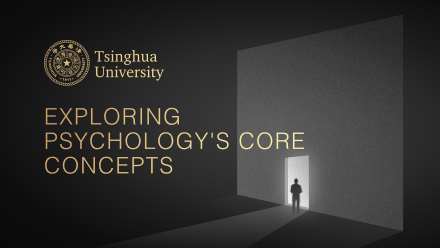
当前课程知识点:History of Chinese Architecture Part I > 4 Architecture in the Sui and Tang dynasty > Section 2 > Gardens of the Sui and Tang dynasty
返回《History of Chinese Architecture Part I》慕课在线视频课程列表
返回《History of Chinese Architecture Part I》慕课在线视频列表
最后我还想讲讲隋唐时期园林的情况
隋唐的园林很丰富
皇家园林从文献记载上我们能够看到很多
比如说隋的大兴宫
就是隋文帝一开始建的宫殿
在唐代叫太极宫
在唐高宗的时候觉得太极宫这地方(
(地势)比较低洼,比较潮湿,住着不舒服
他又规划了一个新的宫殿
就是后来的大明宫
又建了一组大明宫
洛阳也有这些宫殿
我们就不再举了
隋唐时期还有很多离宫
比如说隋的江都宫、仁寿宫、汾阳宫
唐的翠微宫,九成宫、三阳宫,合璧宫等等
可以数出很多很多这样的宫室
我们根据这样的一个描述,再加上一些图像
比如说宋代有一个人
曾经做过一个长安城图
这个图是碑刻,现在残了
有人对它做了复原
我们大致能够看到宋代人怎么样
理解和复原唐的城市的
其中就包括它的园林部分
当然,唐朝的皇家园林也仍然是尺度很大
奇花异卉,里头开凿一个大水池“
“一池三山”,仍然是这样的一个形态
有一个文献记载“
“隋大业元年五月
筑西苑(西边的皇家园林——西苑)
周二百里,其内为海
周十余里
为蓬莱、方丈、瀛洲诸山
高出水百余尺
台观殿阁,罗络山上
向背如神
北有龙鳞渠
萦纡注海内
缘渠作十六院
门皆临渠,穷极华丽”《
《元河南志》画了一个图
非常奇怪的园林的格式
当然真正的园林
不会是这样
这是他们根据文献记载
复原的一个园林的形式
大明宫也是这样
大明宫中间有太液池
太液池当中也有岛
也是这种一池三山的味道
我们刚才讲麟德殿
就是在俯瞰太液池的一个高地上
可以看到(太液池)
在上面有各种表演宴饮
往下一俯瞰,太液池非常漂亮
非常大的水面
岛上的宫殿好像人间的仙境一样的场景
另外兴庆宫刚才我们讲到
玄宗时期建兴庆宫
还让出一块地方
变成公共的看元宵花灯的场所
兴庆宫里也有一个龙池
龙池旁边也有堆的山
也有一些景观建筑
这样的一种形式也是有的
曲江是一个公共园林
这个在中国城市建设史上还是第一次
公共游览区
在城市当中被规划出来
当然还有很多行宫
比如说骊山的华清池等等
这些就不展开了
日本在平城京
曾经做过一个园林的恢复
我用了一张图,我想这种风格
可能跟唐代当时的小的园林的情况还是比较接近的
另外还有一个很有意思的园林
就是山西的绛守居园池
这个地方最早是隋代规划的一个园林
后来大致还保留着这样一个状况
我们这看到的一张图
上头那张图是人们做的复原研究
下头那张图是现状的情况
当然现状肯定是经过了后来很多很多的改动
但是它的底子是隋代的园林
隋代的一个官署的园林
现在保存下一些建筑当然跟隋代已经没有什么关系了
位置也许还是隋代原来建筑的位置
但是现在存在的建筑已经不一样了
这是皇家园林
另外一个必须要提到的
是王维的辋川,这是他的一个别墅
他的一个休闲居住的场所
他曾经约了很多朋友在这写诗作画
后来人评价王维
说他“诗中有画,画中有诗”
他是把画里面要画出诗的意境
诗里头要有一种形象感
他在他的园林设计当中
在他住的辋川这个地方有二十景
他和他的朋友就在这每个景这里写诗画画
按照他们的诗的描述
我们可以看到他每一个景点
每一个他们认为是好的去处
他都给了它一个特定的意境
比如说他有一个山坡叫华子冈
他们用的诗是“
“飞鸟去不穷
连山复秋色
上下华子冈
惆怅情何极”
诗人开始有离愁别恨
他把它赋予到景观当中去
另外还有一个景点
他写“檀栾映空曲
青翠漾涟漪
暗入高山路
樵人不可知”
深山里茂密的树林
他把这样的感觉写出来
还有一个景他是这么写的“
“空山不见人
但闻人语响
返景入深林
复照青苔上”
他每一个景点都不断的写诗
把这个意境写出来
对于王维来说这是一个新的东西
他好玩儿
作为一个文人会画画会写诗
然后他又有这么大一片地
又把它规划出了很多景观
他很好玩儿,很有意思
带着他的朋友一边走一路聊
野餐写诗画画,很兴奋
对他来说可能是这样
但是从他这里开创的
这种给景观题词
赋予它一种诗意、画境(的做法)
就变成后来
文人园林当中常用的手法
到现在无论是看皇家园林颐和园也好
或者苏州园林也好
重要的景观上有个亭子
亭子上挂一个楹联
楹联上一定是写的诗
这个诗一定要点这个景
要把那个意境(写出来)
甚至一个牌匾
一定要把这个景的诗情画意点一点
让人在这里能够感受到一种
虽然这个地方并不大
但是能够让你的想像不断的发生出去,延续出去
或者一个“咫尺山河”的印象
在一个有限的空间当中给人一个无限的联想
这是王维在他的辋川当中做的事情
他开的头,以后这个就变成
中国园林设计当中一个很重要的传统
这是一个辋川图
在敦煌壁画当中也有关于园林的反映
它反映的这个建筑,山水,树木,环境掩映在一起
这样一个园林的主题
在敦煌壁画当中也有所反映
-1 An outline of Chinese Architecture
--Characteristics of Chinese Architecture
--The historical division of Chinese Architecture
--A discussion of the typologies in Chinese Architecture
-2 An outline of Ideas about ancient architecture
--Ancient city planning thoughts and two opposing arguments
--Principles of ancient architecture
--Ideas about ancient architecture
--Ideas about ancient architecture
-Homework
-Section 1
--Early civilization and architectural morphology
--Architecture in the Xia and Shang dynasty
--Architecture in the Xia and Shang dynasty
--Architecture in the Zhou dynasty
-Section 2
--Civilization and cities of the Qin and Han dynasty
--Palaces of the Qin and Han dynasty
--Residential architecture, tombs and other types of architecture
-Homework
-Section 1
--Cities and palaces of the Three Kingdoms, the Jin dynasty and the Southern and Northern Dynasties’ p
--Cities and palaces of the Three Kingdoms, the Jin dynasty and the Southern and Northern Dynasties’ p
--Cities and palaces of the Three Kingdoms, the Jin dynasty and the Southern and Northern Dynasties’ p
--Development of Buddhism and the prosperity of Buddhist architecture
--Buddhist architectural remains in the Southern and Northern Dynasties’ period
-Section 2
--Grottos in the Southern and Northern Dynasties’ period
--Development of wood structures as seen from grottos in the Southern and Northern Dynasties’ period
--Gardens from the Qin and Han dynasty to the Southern and Northern Dynasties’ period
-Homework
-Section 1
--Chinese culture of the Sui and Tang dynasty
--Two capitals of the Sui and Tang dynasty: Chang’an and Luoyang
--Two capitals of the Sui and Tang dynasty: Chang’an and Luoyang
-Section 2
--Li-fang and residential architecture in Chang’an and Luoyang
--Important buildings in the Sui and Tang dynasty palaces
--Gardens of the Sui and Tang dynasty
-Homework
-Section 1
--Religious architecture in the Sui and Tang dynasty
--Wood Buddhist Halls in the Sui and Tang dynasty
--Brick and masonry towers in the Sui and Tang dynasty
-Section 2
--Architectural style and design method in the Sui and Tang dynasty
--Wood frame technology in the Sui and Tang dynasty
--Brick and masonry technology in the Sui and Tang dynasty
--Progression of architectural technology and development of art
-Honework
-Section 1
--History of the Five Dynasties’ period and the Song, Liao and Jin dynasty
--Bianliang of Northern Song and Lin’an of Southern Song
--Pingjiang Prefectural City, Southern Capital of Liao and Central Capital of Jin
-Section 2
--Palaces in Bianliang of Northern Song and Lin'an of Southern Song
--Palaces in the Central Capital in the Jin dynasty
--Gardens of the Song, Liao and Jin dynasty1
--Gardens of the Song, Liao and Jin dynasty 2
-Homework
-Section 1
-Section 2
--Double-eave single-storey wood hall
--Multi-story wood structure s in the Song, Liao and Jin dynasty
-Homework
-Section 1
--Brick and masonry pagodas in the Song, Liao and Jin dynasty
--Brick and masonry pagodas in the Song, Liao and Jin dynasty
--Brick and masonry pagodas in the Liao and Jin dynasty
--Brick and masonry pagodas in the Song dynasty
--Brick and masonry pagodas in the Song dynasty
-Section 2
--A summary of the Yingzao-Fashi
--video
--video
--video
--video
--video
-Homework




